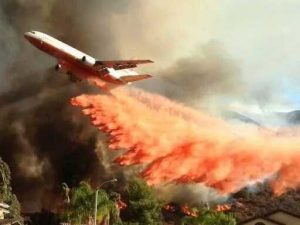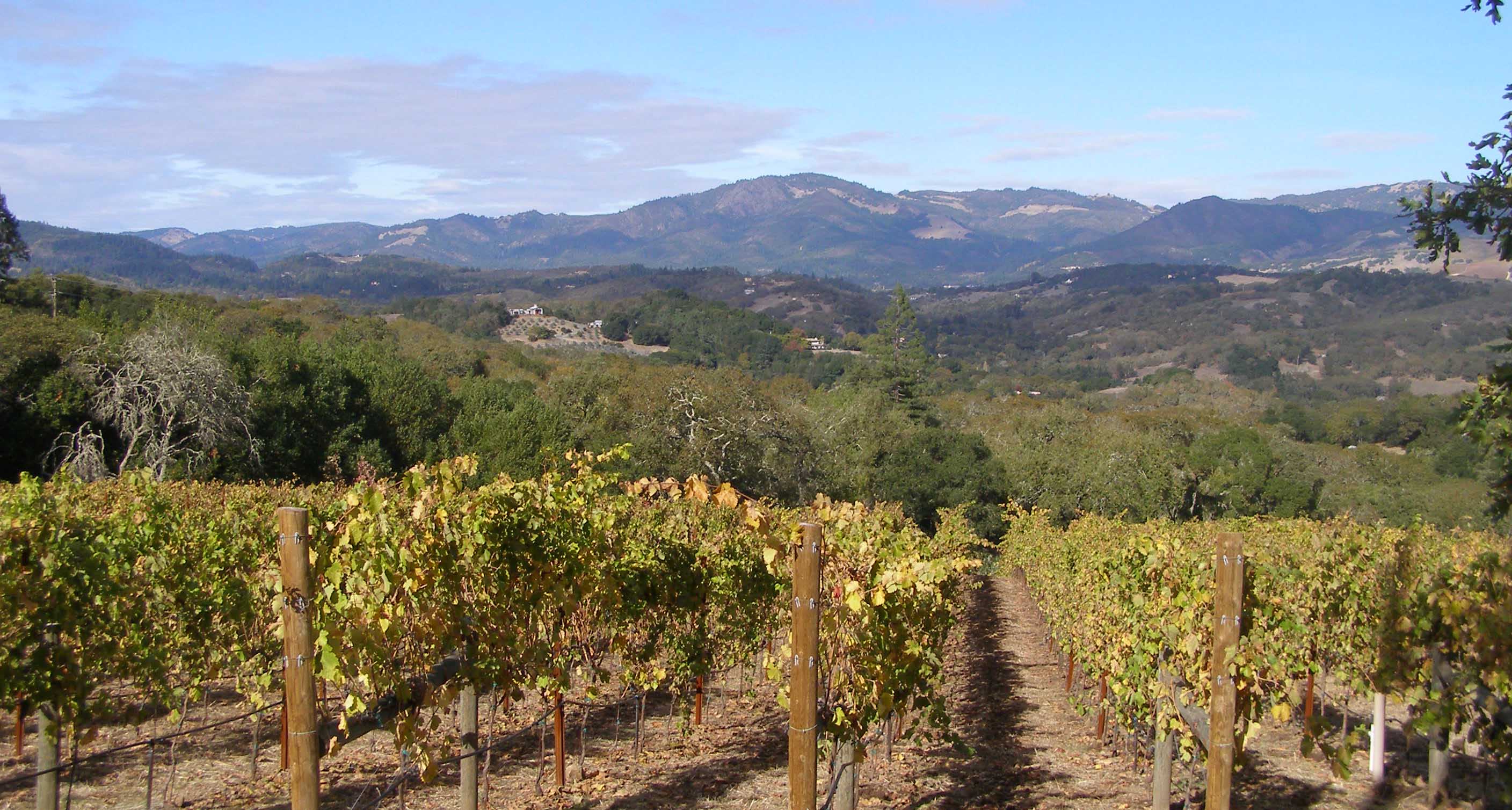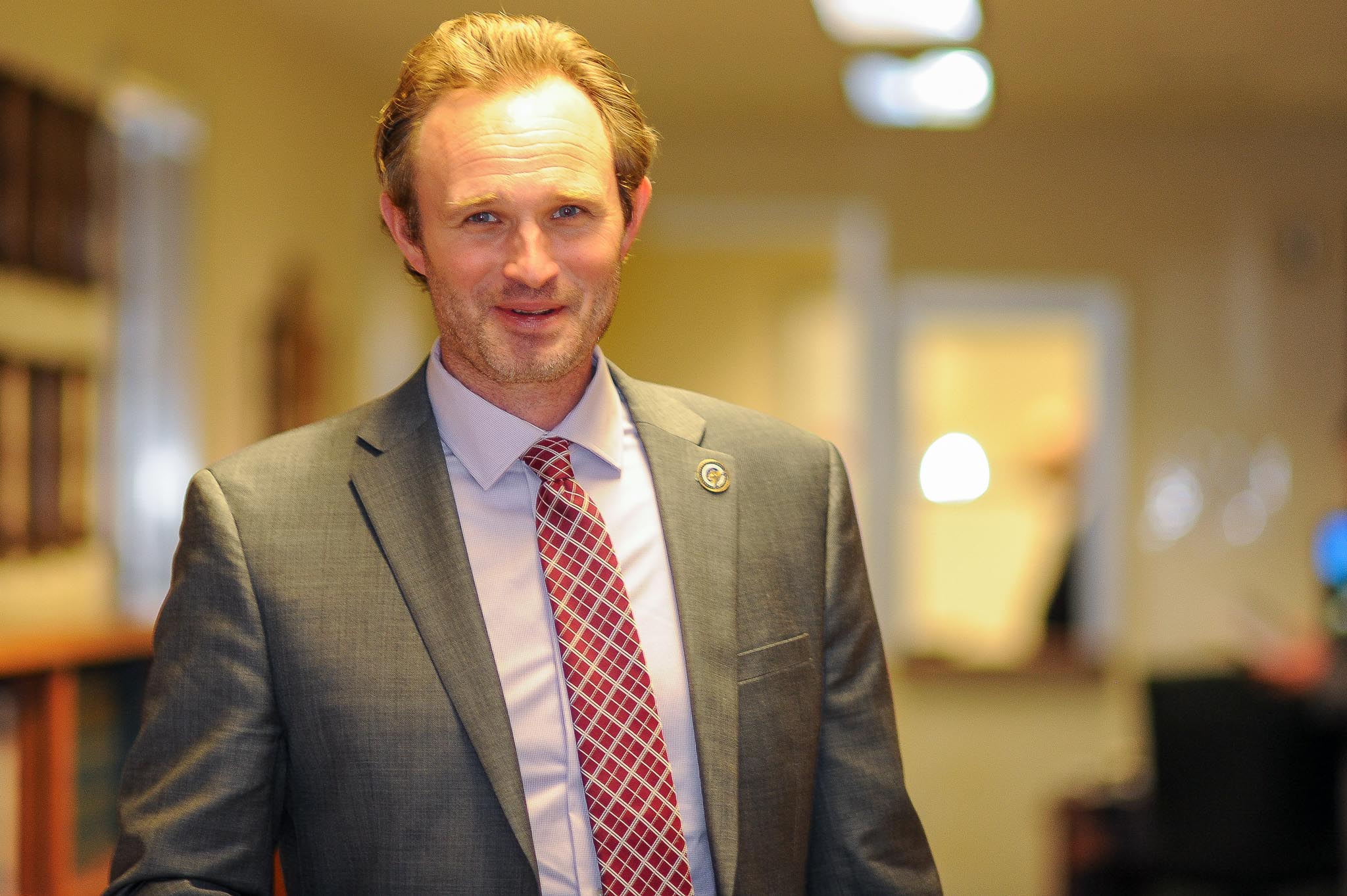
A Horizon Air plane taxis at the Sonoma County Airport, which has been closed due to wildfire concerns. (Wikidata)
Airports Are Silently Facing Closures And Flight Cancellations Due To Growing Wildfires in California
Aircraft are facing a multitude of problems ranging from high wind speeds to smoke and visibility issues.
By Evan Symon, October 29, 2019 6:13 pm
The wildfires raging across California have disrupted everyday life for millions of citizens, ranging from simply having power to losing their entire home. But one area often overlooked are airports and aircraft. Wildfires pose a big threat to them and the effects are already being seen. For example, Charles M. Schulz – Sonoma County Airport shut down due to smoke and visibility issues,with many takeoffs and landings at smaller airports halted as well. Many planes have been diverted, with many more flights cancelled.
The California Globe reached out to Chris Morgan, an airport operations worker who was worked at airports in three states. Morgan has experienced wildfires before while on the job, and he talked with the Globe about what wildfires mean for airports and air travel across California.
“Most people think about it simply as a ‘wildfire’ thing, but it’s much deeper,” explained Morgan.
“First you have wind. As much as it spreads fire, it can be a bigger danger to people in the air. Some smaller trainer planes are only rated to fly in 15 knots (17 mph), or 25 knots (28 mph), so that grounds a lot of aircraft, especially students. For commercial flights, with these wind speeds, it makes everything more difficult. There have been tanker aircraft fighting fires, and wind, while not the biggest concern, is still huge.”
“Really high winds, for most small non-commercial airports, can ground most people.”
“Then we have the smoke. Fires aren’t a problem for airports unless they’re directly here. The big issue is smoke. It cuts visibility, but it is a huge danger to fly through it. Jet aircraft have crashed simply because the smoke clogged everything up. When those volcanoes in Iceland erupted about ten years ago, planes were grounded everywhere. Even military aircraft veered away. And that’s what we don’t want here.”
“Even the tankers flying above the fire need to get out of there quickly because it’s a giant risk to even fly through that.”

“There’s also power outages. Airports tend to have a better control on electrical things since we’re used for emergency services and landings, but some smaller airports may be shut down due to those power outages.”
“All together, it tells us why we’ve been closing things.”
With wildfires still burning around Los Angeles and in the Bay area, this only complicates problems.
“We haven’t seen it so much in Los Angeles at any of their airports. Van Nuys and Santa Monica are close, but they’re fine right now. LAX is far enough away so the only commercial airport that could be affected is Burbank. But remember there’s a lot of private aircraft at smaller airports, and flights there and to Burbank need to be diverted somewhere.”
“It’s worse in the Bay Area. Those diversions from Santa Rosa are causing little pileups in San Jose, Oakland, and San Francisco. And that’s just one airport. If fires get close enough to, say San Jose, the Bay Area can be screwed. It creates crunches at Oakland and San Jose. If a stretch between San Jose and San Francisco goes out, that’s Palo Alto and Moffet. Those two airports have tons of private jets from companies like Google. You know, Silicon Valley. That’s a lot of private service that suddenly needs to go elsewhere. So San Francisco and San Jose get flooded.”
“There’s also all the different airspace clearances around the Bay, so diverted planes will besiege every ATC in the area. It’s surprisingly fragile.”
San Francisco International Airport had a close brush last week when the worsening air quality had officials on the lookout in case something needed to be done. Some flights actually had to be delayed and cancelled. Quality ended up improving, but it shows that even the largest airports don’t want to risk any danger for pilots or passengers.
For airports in the state, such as Santa Rosa and San Francisco, wildfires do possess enough of a threat to ruin everything.
“Santa Rosa closing alone is bad enough,” said Morgan. “But if it’s several, worst case it can take awhile to recover. But that’s if multiple wildfires erupt near airports all around the Bay.”
And while airports have plans in place for diversions, grounding rules and other aspects, the power of wildfires is still very real for airports across the state.
“Most people don’t realize how reliant we are on airports in California,” said Morgan. “But if we lose a few critical ones due to smoke and wind and power outages, we easily enter a giant crunch that takes a lot of time to get out of. It also means later deliveries, more delayed and canceled flights, more car traffic due to delays, more losses for airports due to no planes coming in or leaving. It messes with everyone.
And with Thanksgiving coming up, I can only hope we have no fires then and no commercial airports closed or we may have a lot of angry and tired people and miles of traffic.”
- Paper V. Plastic - April 20, 2024
- Two More Insurance Companies Pull Out Of California - April 19, 2024
- San Francisco Files Lawsuit Against Oakland Over Airport Renaming - April 19, 2024




